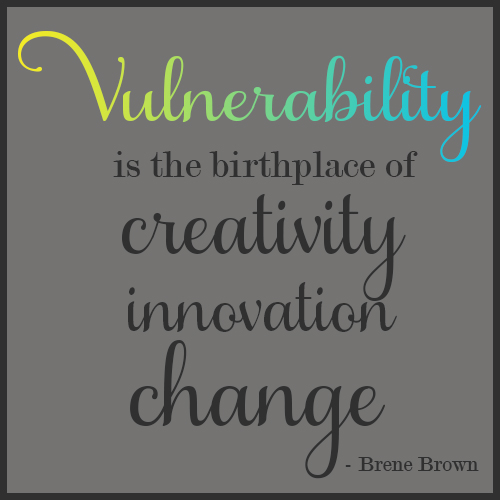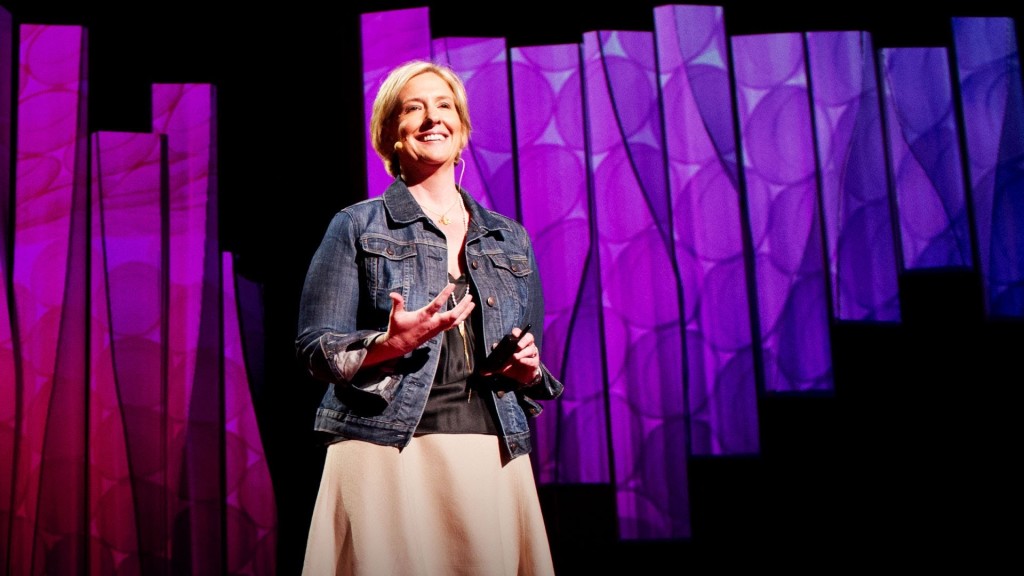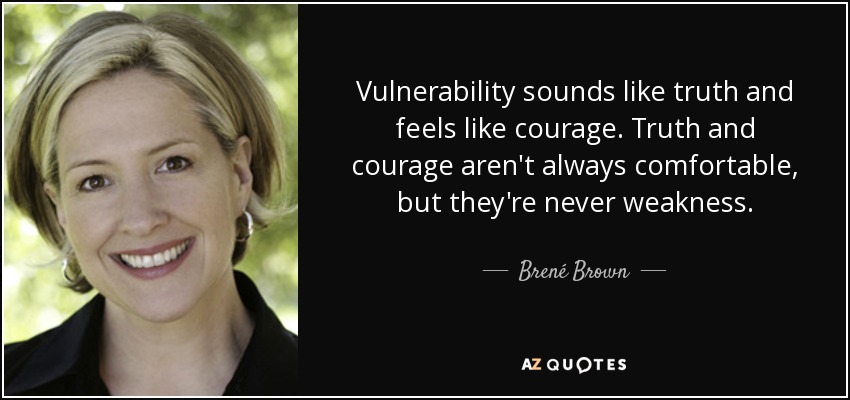Courtesy of TED Talks
What do courage and joy have in common? How do we live fuller and more wholehearted lives by daring greatly?
The answers to these questions and more were answered in Daring Greatly by storytelling researcher and psychologist Dr Brené Brown. Exploring the width and depth of how we live, love and engage with one another, Daring Greatly challenges us to defy the prevailing social climate of scarcity in order to live and love more wholeheartedly.
Weaving in numerous anecdotes from her research work in social psychology, Dr Brown implores us to embrace vulnerability so that we can reclaim our emotions, reignite our passion and purpose, and live more truthful and courageous lives.
Understanding our culture of scarcity
Quipped as the “never enough” problem, a culture of scarcity makes us feel defeated when we compare our lives, marriages, families and communities to unattainable media-driven standards of perfection. If you think about it, much of our society today runs on a shame-prone culture.
When we were young, our parents may regale us with scary stories of a bleak future if we fail to study hard and do well academically. In social gatherings, we are often asked what we do for a living, where our kids study, or which destination will we go to for our year-end holidays. At work, performance grades and bonuses are seen as a hallmark of pride, while those who are average or below are either forgotten or ridiculed.
The counterbalance of scarcity isn’t abundance. Rather, it is having enough, ie what Dr Brown calls wholeheartedness. At its core, wholeheartedness is about “vulnerability and worthiness: facing uncertainty, exposure, and emotional risks, and knowing that I am enough”.
Vulnerability debunked
So what is vulnerability? According to the book, vulnerability is defined as uncertainty, risk and emotional exposure. The essence of vulnerability are beautifully captured by the following quotes from the book:
- “Waking up every day and loving someone who may or may not love us back, whose safety we can’t ensure, who may stay in our lives or may leave without a moment’s notice, who may be loyal to the day they die or betray us tomorrow…”
- “To put our art, our writing, our photography, our ideas out into the world with no assurance of acceptance or appreciation…”
- “To let ourselves sink into the joyful moments of our lives even though we know that they are fleeting…”
According to Dr Brown, vulnerability is not a weakness. Instead, it is the process of daring greatly and having the courage to show up and let yourself be seen.
Nor does vulnerability only apply to people in certain professions or statuses. Rather, it is a universal phenomenon that all of us who live fully and wholeheartedly should ascribe to.
Vulnerability is also not about just “letting it all hang out” with anybody. Relationships needs to be built and trust forged before we can be vulnerable with others.
Finally, going it alone is a myth that many of us hold on to. We can’t learn to be more vulnerable or courageous by striving on our own. Rather, our first and greatest dare is asking for support.

Combating shame
A universal and primitive human emotion, shame is often caused by the fear of being disconnected with those around us. In the book, shame is understood as “the intensely painful feeling or experience of believing that we are flawed and therefore unworthy of love and belonging.”
According to Dr Brown’s research, there are 12 shame categories, and they include appearance and body image, money and work, parenthood, family, mental and physical health, addiction, sex, aging, religion, surviving trauma, and being stereotyped or labeled.
In building our vulnerability, we need to bolster our “shame resilience”. By doing so, we can help to kill those shame “gremlins” who make us believe that we are flawed and therefore unworthy of love and belonging.
To practice shame resilience, we could undertake four key steps:
- Recognise shame and understand its triggers: Can you physically recognise when you are in the grips of shame? When you are, feel your way through it, and figure out what messages and expectations triggered your “shame attack”.
- Practice critical awareness: Do a reality-check of the messages and expectations driving your shame. Are they realistic? Attainable? Are they what you want to be or what you think others expect from you?
- Reach out: Own and share your story with others whom you can trust. We can’t practice empathy if we are not connecting with others.
- Speak shame and call it out: Are you talking about how you feel and asking for what you need when you feel shame?
Removing our vulnerability armour
To live with courage, purpose and connection, we need to take off our vulnerability armour, show up and let ourselves be seen. These “shields” are often developed over the years as we transition from the openness of childhood to the guardedness of adulthood.
Let me highlight some of the main ones, as well as strategies to overcome them.
1) Foreboding Joy: The paradoxical dread that occurs when we experience moments of great joy. This doom-filled psychological reaction can be overcome by practicing gratitude and understanding that joy comes to us in ordinary moments.
2) Perfectionism: At its core, perfectionism is about trying to earn approval. It is the twenty tonne shield that we lug around, thinking that it can protect us, when it is the thing that’s really preventing us from being seen. To overcome this, we should learn to appreciate the beauty of cracks. Be kinder to ourselves, understand the common sufferings that all humanity undergoes, and take a more balanced and mindful approach to our thoughts and feelings.
3) Numbing: Being crazy-busy is one of the most universal numbing strategies. Ditto for any forms of addiction, be it alcohol, cigarette or others. To address this, we should learn to feel our feelings, set boundaries for ourselves, and cultivate our spirit by caring for and nourishing our spirits. For some this could be God, for others it’s through nature, art, or other acts that keep us grounded in our sacredness.
4) Viking or Victim: Sometimes we react to vulnerable situations by being dominant and aggressive (Viking) or acting like a loser who is always taken advantage of (victim). Both situations are unhealthy, and could be addressed by redefining what success is (it isn’t win-or-lose), reintegrating vulnerability by cultivating trust and connection, and seeking support.
5) Letting it all hang out: Occasionally, we may overshare our pain through one of two strategies:
- Floodlighting, where we share shame stories with somebody with whom there is no connection. To overcome this, we should clarify intentions, set boundaries and cultivate connections. Ask ourselves why we are sharing, what outcomes we hope for, and whether the outcomes will align with our intents.
- Smash and grab, where we “smash” through people’s social boundaries with intimate information, and “grab” their attention and energy. This could similarly be resolved by questioning our intents.
Embracing wholehearted leadership
To build a “daring greatly” culture, we need to embrace our vulnerability and cultivate shame resilience by being leaders, parents and educators in new and uncomfortable ways. When we do so, we help to close the “disengagement divide” that arises in shame cultures.
Minding the gap mandates us to practice disruptive engagement by having honest conversations about vulnerability and shame. Once again, there are several points to consider here.
1) Adopt feedback that normalises discomfort: Vulnerability is at the heart of the feedback process. In practicing feedback that results in real growth, leaders could state the following:
“We believe growth and learning are uncomfortable so it’s going to happen here – you’re going to feel that way. We want you to know that it’s normal and it’s an expectation here. You’re not alone and we ask that you stay open and lean into it.”
2) Sit on the same side of the table: Instead of sitting across from the other party, we should sit next to the person involved, put the problem in front of us, acknowledge what the other person does well instead of pick apart their mistakes, and talk about how resolving these challenges could lead to greater growth and opportunity. Leaders also need to model the right behaviours of vulnerability and openness.
3) Wholehearted parenting: By being a wholehearted parent, we strive to raise children who engage the world from a place of worthiness, embrace their vulnerabilities and imperfections, and have the courage to be imperfect, vulnerable and creative. To do so, we need to:
- Understand and combat shame by building “shameproof” households
- Recognise our own vulnerability armour and model for our children to take it off
- Parent from a place of “enough” rather than scarcity
- Build a culture of belonging in our families, by cultivating worthiness in our children and assuring them that their sense of belonging is unconditional
- Mind the gap by practicing what we preach
- Have the courage ourselves to dare greatly and be vulnerable
Courtesy of AZ Quotes
The famous TED Talk
In a world where “never enough” dominates, putting ourselves out there may expose us to the risk of criticism or hurt. However, shutting ourselves off from being vulnerable may make us distance ourselves from the very same experiences which bring purpose and meaning to our lives.
Insightful and heart-felt, Daring Greatly challenged me to look at the way I live and relate to others. As I flip through page after page, I couldn’t help nodding in agreement with what the book tells me. I will certainly be changing the way I live, love, parent and lead by practicing vulnerability.
Finally, check out the famous TED Talk by Dr Brown where she expounds on what vulnerability is in her trademark winsome humour.



Thank you. I’m using this article in conjunction with a Victorian Novel study.